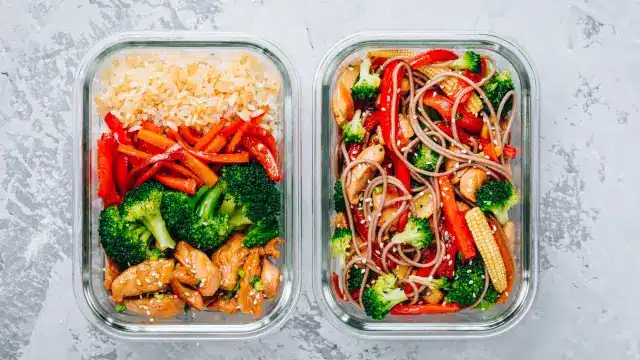
7 Tips For Cooking Vegan Food
As awareness surrounding the ethical, environmental, and health impacts of our daily food choices increases, there has been an increasing shift towards vegan dietary lifestyles. More people want to avoid food that comes from animals, including eggs and dairy products. Here we discuss about vegan cooking tips.
It’s true that until a decade ago, veganism had not yet gained the same popularity as today. But nowadays, many people are concerned with what they eat, where it comes from, and how it can affect their health. According to the Good Food Institute, plant-based food sales have grown three times quicker than the rest of the dietary sales in 2021. For this reason, adopting a vegan lifestyle is a lot more common – and feasible than you would think.
But despite its growing acceptance and recognition, you may find preparing vegan cuisine intimidating or challenging. For instance, you can’t rely on a packet of full-fat cream to make your dish taste richer and creamier. But despite these shortcomings, there are a few strategies that can help elevate your vegan dishes into delicious and easy-to-prepare meals. Here we discuss the most simple yet impactful ones.
1. Find plant-based substitutes for foods you love
Transitioning to a vegan diet doesn’t mean giving up your favorite foods. With some exploration and creativity, you can find plant-based substitutes that will satisfy your cravings while aligning with your dietary choices. One effective way to find these substitutes is by identifying the key components of the dish you want to recreate. And seeking plant-based alternatives for each ingredient.
For example, who doesn’t enjoy a good brownie now and then? To satisfy this craving, explore vegan blogs, cookbooks, and online communities where you can find an easy vegan brownie recipe with vegan substitutes for each ingredient. These options provide similar textures and flavors while simultaneously satiating your cravings.
2. Use nutritional yeast
Nutritional yeast is a versatile and nutritious ingredient valuable to your vegan cooking repertoire. It is a deactivated yeast popular among vegans for its cheese-like and nutty flavor. Although you can use it in various ways of vegan cooking tips, one common use of nutritional yeast is as a cheese substitute. Sprinkling it over pasta dishes, popcorn, or roasted vegetables can add a savory and cheesy flavor. You can also incorporate it into vegan cheese sauces. Such as a creamy cashew-based sauce for macaroni and cheese or a cheesy dip for nachos.
Moreover, you can whisk it into gravies, sprinkle it over mashed potatoes. Or add it to creamy soups like broccoli or potato soup. This simple addition provides a rich and savory taste that enhances the overall umami profile of the dish.
3. Work with what you know
Just because you’re now cooking vegan dishes doesn’t mean you must let go of all the culinary knowledge and skills you already have. On the contrary, having these cooking tips or hacks at your disposal makes exploring and creating dishes easier. Try breaking down your favorite recipe by identifying each component and flavor of the food you want to prepare. Once you have this, the next step is to look for vegan substitutes that mimic the texture and provide a similar flavor.
For instance, if you’re in the mood for classic spaghetti and meatballs but in vegan style, think of a protein alternative. Using lentils or finely chopped mushrooms often work as excellent substitutes. Since these are rich in protein content and offer an earthy flavor that can accentuate your dish.
4. Experiment with new ingredients
When preparing vegan dishes, it’s best to step out of what you know as familiar and look beyond it. By embarking on the vegan journey, you can explore a wide range of exhilarating new flavors, textures, and ingredients. It allows you to discover culinary possibilities that you might have never contemplated before. Many people begin by looking for plant-based alternatives to dairy products and eggs. Some common substitutes for these are soy and almond milk, vegan cheeses, or even mayonnaise made from plant ingredients.
Other alternatives to animal-based ingredients, especially proteins, could be jackfruit, legumes, or tofu. Their unique textures can enhance your vegan dishes while ensuring you receive the recommended dietary intake of proteins and other essential nutrients.
5. Avoid steaming vegetables all the time
Although steaming vegetables is a convenient and quick way of cooking them. This method may not always give you the best flavors out of your ingredients. Too much steaming makes vegetables unappealing and leaves an unsavory taste in your mouth after eating. More importantly, regularly eating steamed vegetables can quickly become boring and monotonous, making it difficult to stick to a vegan regimen.
Instead, you can roast your vegetables in an oven or fire them up on a barbecue grill to unearth their innate sweetness and build a caramelized crust outside. You can also use spices and herbs to sauté your vegetables in a frying pan until they turn golden. The more variety you bring to your cooking techniques, the easier. It will be to enjoy tips and commit to your vegan cuisines.
6. Prepare basic ingredients in advance
Most people get intimidated by vegan cooking because it’s time-consuming and often requires plenty of prep beforehand. However, you can easily mitigate this problem by doing a major chunk of your preparation at the beginning of the month and using it as needed.
For example, after your weekly or monthly grocery trip, you can peel and chop whatever vegetables you plan on using in the upcoming days. After properly drying them, seal them in an airtight container and store them till you need to use them. On the day you want to cook these vegetables, simply take them out and start grilling or frying without wasting time and energy preparing them.
Read More: 8 Cooking Tips For Beginners Home Chefs
7. Stock up your spice cabinet
For cooking vegan dishes, spices can be your ultimate best friend. Therefore, leveraging them to enhance your cook’s flavor is wise. Their rich earthiness, warmth, and sweetness can improve the color, taste, and palatability of whatever you cook. The little kick of heat they give, or the sudden acidity they offer, can easily turn any boring old meal into an exciting new one.
Spices are also rich in antioxidants and other anti-inflammatory properties that can improve overall health. Incorporating them into your everyday meals can give each dish you make a certain character and keep you safe from several diseases and illnesses.
Conclusion
Cooking vegan meals can be as simple or as complex as you make it, and it largely depends on your preferences and the recipes you choose. While some vegan recipes may involve many ingredients and cooking techniques, others can be quick, straightforward, and require minimal preparation. Moreover, incorporating simple tips like those above can make the entire cooking process much less challenging and far more enjoyable.



